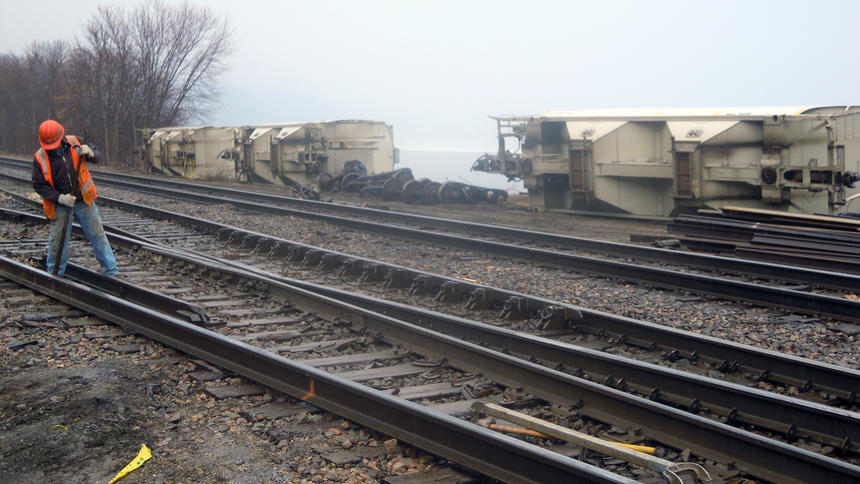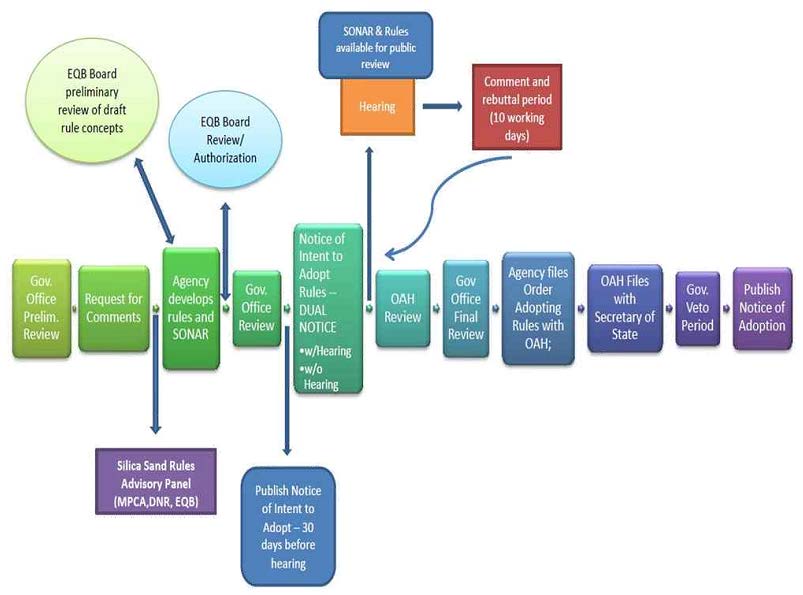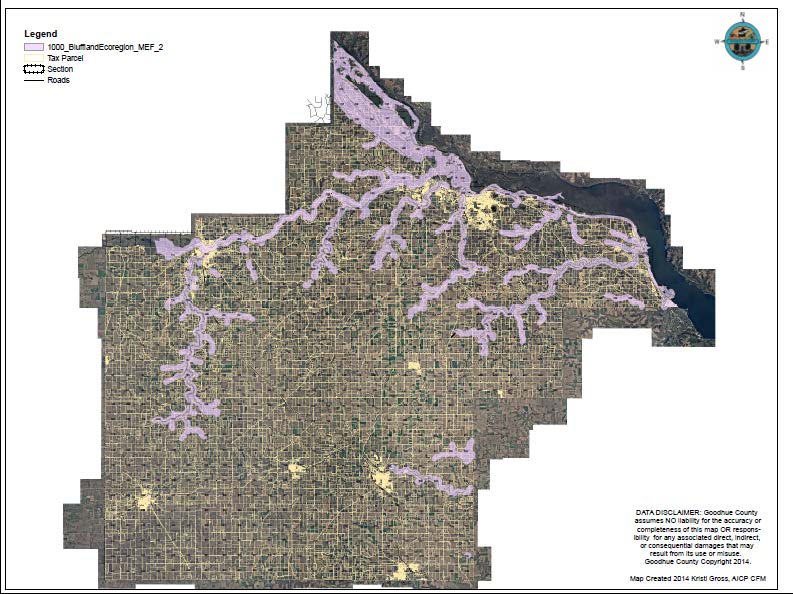Off to the boneyard…
August 30th, 2014
Silica Sand Rulemaking — Mtg. Thursday 8/28
August 26th, 2014
 It’s that time again — the Silica Sand Advisory Committee is meeting again on Thursday, from 10 a.m. to 3:30 p.m. at the People’s Energy Cooperative in Oronoco, Minn.
It’s that time again — the Silica Sand Advisory Committee is meeting again on Thursday, from 10 a.m. to 3:30 p.m. at the People’s Energy Cooperative in Oronoco, Minn.
Here’s the Agenda:
Agenda
Dig this:
In my experience, the search/stretch for consensus is the first step in unreasonable compromise. It takes a push to change things, and it’s important not to give up too soon.
As you know, I’ve been frustrated at the way these meetings are handled, in that they’re NOT doing what a rulemaking advisory committee is supposed to do, which is review and comment on draft rules. And we’re not getting representation on this committee, there are no regular updates from members that I’m aware of, unless I ask on a list, so we’re not getting any opportunity for input or feedback from the representatives. Plus there’s Charlie Peterson…
I was listening to the July meeting, and for introductions, there were only six members of the committee present:
Tara Wetzel – MN Aggregate Ready Mix Assoc.
Beth Procter – Lime Twp., Blue Earth County
Al Frechette – Scott County
Doug Losee – Unimin
Tom Rowekamp – IT Sand
Kelly Stanage – Citizen Rep. from Houston County
I’ve heard from Amy Nelson that she, Keith, and Vincent Ready were there. Katie just let me know she was there. Others? Were introductions not broadcast? Did anyone come in later? Can’t tell, it was audio only (unless I’m missing something), and the audio was out for a large part of the presentation. Where are the alternates? Where are the alternates? And if members are determining that it’s a big waste of time and don’t want to show up, well, it seems they ought to let the agencies know so replacements can be found! And so the meetings can be changed to become more ___________ and less _________ so members can and will attend!
Here’s the bright spot of the day, from what I’ve seen:
Look where they put the “Advisory Panel.” IT’S IN THE RIGHT PLACE!!! YES!!! Now, there needs to be another arrow, though, or a expansion of the purple square that says, “Advisory Panel review of draft rules.” They’re sidestepping by saying that, even the EQB Board, will “review draft rule concepts.” NOPE, not good enough, eliminate that word “concepts” and let’s start reviewing rules, the Advisory Panel and the EQB. DRAFT RULES! It’s that simple.
From the site, here are the future planned meetings:
Release PSEG from reactive power requirement? NOT!
August 23rd, 2014
PSEG wants out of its reactive power requirement for its Artificial Island Salem-Hope Creek generators, to get “maximum generation” and wants to build transmission to enable that plan. Reactive power stabilizes the system, and there’s no reason to exempt PSEG from that requirement. None! And that is certainly no reason to build transmission.
Our other home is in Delaware, Port Penn, to be precise, and I’ve just learned that even though the MAPP transmission project is dead, dead, dead, they’ve kept its heart alive, and are proposing to run a transmission line from Salem/Hope Creek across the Delaware Bay to Delaware City. An “Artifical Island – Red Lion” (AI-RL) transmission line. Great…
Here’s the map. Note that they don’t show the existing “Artificial Island-Red Lion” transmission line on this map — is this to use the same route, different, and why isn’t it shown on any of the maps?
Why is this needed?
It’s not a need, it’s a want.
WHAT??? Yes, that’s the PJMese for “ramp up the generation and not have any reactive power requirement” that stabilizes the electrical system, because, he, that takes away from the generation available to sell, can’t be doing that, can we, what’s more important, profit or stability?
Here’s the PJM “Problem Statement” from their site:
WOW… once more with feeling:
Generate maximum power without a minimum MVAr requirement
… and that’s their basis for more transmission? NO, I DON’T THINK SO!
PJM then runs
Ummmmm… oh… OK… well, then, PJM, it says to itself, it says, hey, let’s just produce some “stability test results” to make it look better, yeah, that’s the ticket:
Artificial Island Projects Stability Test Results Summary (Public Non CEII)
How stupid do they think we are? Well, if you don’t know the secrets of reactive power, here’s “everything you wanted to know about reactive power.” The basic premise:
Except in a very few special situations, electrical energy is generated, transmitted, distributed, and utilized as alternating current (AC). However, alternating current has several distinct disadvantages. One of these is the necessity of reactive power that needs to be supplied along with active power. Reactive power can be leading or lagging.While it is the active power that contributes to the energy consumed, or transmitted, reactive power does not contribute to the energy. Reactive power is an inherent part of the ‘‘total power.’’
Plus it turns out the AI-RL project proposals don’t meet PJM’s cost/benefit criteria:
The extent to which the relative benefits of the project meets a Benefit/Cost Ratio Threshold of at least 1.25:1 as calculated pursuant to Section 1.5.7(d) of this Schedule 6.
Even PJM had to admit that economic benefits were virtually nonexistent!
p. 3-4, 8.22.2014 July 2014 – PJM Board Approval of RTEP Whitepaper PDF
HAH! So despite this, PJM staff made a recommendation to the PJM Board, which said:
OK, transmission wonks, have you ever heard of a proposal that PJM didn’t like? Sounds like a significant “need” failure to me, that their desire just wasn’t enough. So back to the drawing board — but who gets a pencil?
Let’s see, PJM rejected it, and now they’re arguing about river crossings? How do you get from “lack of need” to “options for a costly crossing of the river?” From PJM’s report:
In April 2013, PJM Interconnection, LLC (PJM) requested technical solutions for improving PJM operational performance in the Artificial Island area under a range of anticipated system conditions and to eliminate potential planning criteria violations. In response to the Artificial Island-Red Lion Window, PJM received conceptual design level proposals from five (5) developers for the design and construction of a 500kV transmission line between Public Service Electric and Gas Company’s (PSE&G’s) Salem and Hope Creek Substations, which are located at Artificial Island in Salem County, New Jersey (NJ), and Delmarva Power & Light’s Red Lion Substation in New Castle County, Delaware (DE). The project is generally referred to as the Artificial Island-Red Lion 500kV Transmission Line.
PJM initiated, and note that:
The assessment of these proposals with regard to their ability to address electrical system needs or reliability is not included in the scope of this study.
Here’s the PJM PAGE WITH ALL THE PROPOSALS
And constructability analysis, here’s one (note they have it backwards, RL-AI):
GIA Red Lion-Artificial Island Constructability Analysis AI-RL Xmsn
And another constructability analysis:
And a third that bears closer examination, because if the point of this is generation without reactive power requirement, look at the option that addresses reactive power:
Burns & Roe – Constructability – Static Compensation VARs on AI-RL
Here are comments from interested parties:
New Jersey Sierra Club Letter – AI-RL Xmsn
New Jersey BPU and Rate Counsel Letter AI-RL Xmsn
Delaware “Public Advocate” Letter – AI-RL Xmsn
Northeast Transmission (LS Power) Letter AI-RL Xmsn
Atlantic Grid Letter AI-RL Xmsn
In the News Journal today:
Indecision remains on power line route
Contact Aaron Nathans at 324-2786 or anathans@delawareonline.com.
Overland Comments on Zip Rail
August 22nd, 2014
Today’s the day — Comments on the Zip Rail are due RIGHT NOW! Just filed mine and Alan Muller filed his:
How about you?
Silica Sand Mining 1,000 ft setback from Public Waters
August 19th, 2014
At long last, here it is — only took a gazillion phone calls, emails, and finally a Data Practices Act Request…
TA-DA!!!
The Goodhue County Silica Sand Mining Ordinance 1,000 foot set back from Public Waters:
1000_BlufflandEco_MEFsetback – BIG map, can enlarge for great detail!







